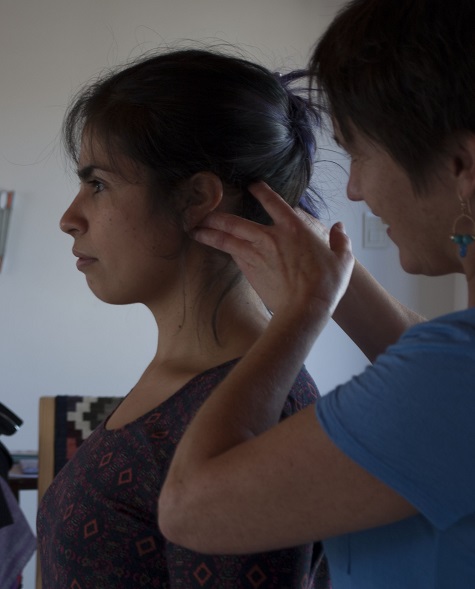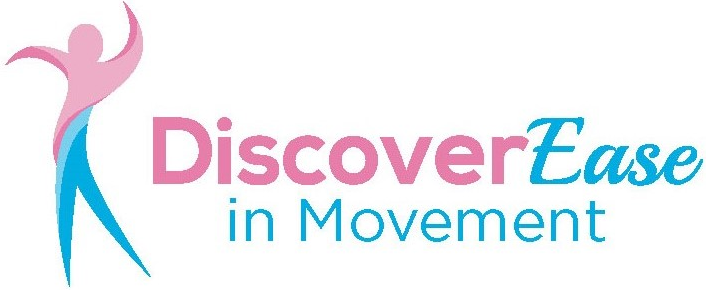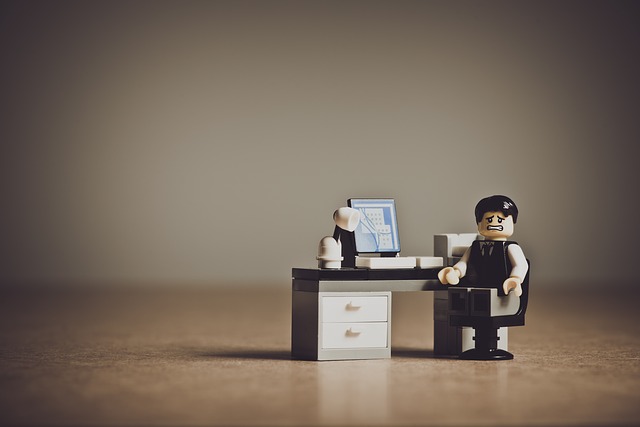If you’re like most Americans, you spend more than 50% of your waking hours either at work or getting to and from work*. That’s a huge percentage of life. All the more reason to care for your postural health in the workplace.
But a staggeringly high percentage of Americans suffers from a work related musculoskeletal disorder. Musculoskeletal disorders are things like pain, numbness, sprains, tendonitis, carpal tunnel syndrome and hernia. They include problems in the muscles, nerves, tendons, joints, cartilage and spinal disks caused by the body’s reaction to strenuous, repetitive motions (for example, bending, climbing, reaching, pulling, pushing, grasping, twisting, etc.) or overexertion (for example, holding the same position, an unnatural position and excessive physical effort – like holding your neck in a constantly flexed position.)**,***
In 2015,
- 31% of all occupational injury and illness was due to musculoskeletal disorders. **
- The median number of days required to recuperate from musculoskeletal disorders was 12 days, compared to 8 days for all workplace injuries.**
In addition to the personal cost, musculoskeletal disorders result in extremely high costs to employers in absenteeism, lost productivity, and increased health care, disability, and worker’s compensation costs. According to the Center for Disease Control and Prevention, work related musculoskeletal disorders are the most costly health problem for US employers.***
- Employers spend $20 billion a year on direct costs for workers’ compensation related to musculoskeletal disorders, and up to five times that much for indirect costs, such as those associated with hiring and training replacement workers.****
Government and private industry tend to focus on job rotation and changing the work environment to prevent musculoskeletal injuries. While these are important, the incidence rate continues to grow each year, and a key factor is ignored in these initiatives: the individual’s use of the body.
Sitting, bending, twisting, lifting, reaching, standing, grasping and other repetitive motions, exertions and less than optimal postures that do not cooperate with the body’s biomechanical design compress the spine and interfere with an efficient use of joints and muscles. Tissue damage builds up over time, leading to musculoskeletal disorders and pain.
There is a way to empower individuals to change the harmful patterns of tension that lead to musculoskeletal disorder and to instill a healthier use of the body. The Alexander Technique posture and movement training provided by DiscoverEase in Movement arms individuals with the knowledge and skills to use the body more efficiently, enabling them to improve their quality of life in and out of work.
The Alexander Technique is an evidence based method for recovery and prevention of musculoskeletal disorders. It works by reeducating individuals to change harmful patterns of tension underlying posture and movement. This unique educational approach enables individuals to overcome and prevent chronic pain, and to take control of their musculoskeletal health.
To learn more about how to bring Alexander Technique posture and movement coaching into your workplace, write to me at info@discoverease.how. Learn more on my website at www.discoverease.how, including the page dedicated to healthcare professionals. View a bibliography of scientific studies showing the efficacy of the Alexander Technique in reducing fatigue and chronic pain – including neck, back and knee osteoarthritis pain.
*”American Time Use Survey,” Bureau of Labor Statistics
** Nonfatal Occupational Injuries and Illnesses Requiring Days Away From Work, 2015, Bureau of Labor Statistics, November 10, 2016
*** Work-Related Musculoskeletal Disorders & Ergonomics, CDC, March 1, 2016
**** PREVENTION OF WORK-RELATED MUSCULOSKELETAL DISORDERS, Occupational Safety and Health Administration, US Dept. of Labor, 2014

Learn to change habits of posture and unconscious patterns of tension to move with greater ease and freedom.
It’s possible to change these patterns to manage and reduce tension, stress and pain.
In one-on-one coaching sessions, I help each person rediscover their natural poise and coordination while going about daily activities. Group classes are a great way to learn by experience and observation.


Schedule an online class in the comfort of your home or workplace!
We’ll use verbal and visual communication so you can learn to pay attention to your self, get unstuck and find ease.
Scientific research on the Alexander Technique
Here are some links to studies related to pain. See more at the American Society for the Alexander Technique website.
Alexander Technique and chronic back pain
Little P et al (2008). British Medical Journal 337:a884.
Patients with chronic low back pain given 24 Alexander Technique lessons had a significant reduction in pain from 21 days to 3 days per month, and an improvement in functioning and quality of life by “limiting muscle spasm, strengthening postural muscles, improving co-ordination and flexibility and decompressing the spine”.
Alexander Technique lessons or acupuncture sessions for persons with chronic neck pain: A randomized trial
MacPherson H, Tilbrook H, Richmond S, Woodman J, Ballard K, Atkin K, Bland M, Eldred J, Essex H, Hewitt C, Hopton A, Keding A, Lansdown H, Parrott S, Torgerson D, Wenham A, Watt I. Annals of Internal Medicine Nov. 2015, Vol. 163, No. 9
The Alexander Technique Lessons or Acupuncture Sessions study shows that Alexander Technique leads to a significant long-term reduction in chronic neck pain and improved self-care ability to reduce or manage pain without medication.
https://issuu.com/backcare/
Reductions in co-contraction following neuromuscular re-education in people with knee osteoarthritis
S. Preece, R. Jones, C. Brown, T. Cacciatore and A. Jones. BMC Musculoskeletal Disorders 2016.
This study “challenges clinical management models of knee osteoarthritis which focus primarily on muscle strengthening.” Alexander Technique instruction reduced excessive muscle co-contraction and reduced the pain of patients with knee osteoarthritis by 56%.
“Taking charge, choosing a new direction: A service evaluation of Alexander Technique lessons for pain clinic patients (SEAT): An approach to pain management.“
McClean, S. and Wye, L. (2012) Project Report. University of the West of England, Bristol.
A clinical trial demonstrated the therapeutic value and effectiveness of Alexander Technique lessons for chronic back pain. Lessons were found to improve quality of life and patients’ management of pain. More than half of the patients stopped or reduced their medication, and the reduced impact that the pain had on their daily lives led to some behavioral changes and changes in awareness and self-knowledge on the part of the patients, leading to 50% reductions in pain related NHS costs.
The Impact of the Alexander Technique on Improving Posture and Surgical Ergonomics During Minimally Invasive Surgery: Pilot Study
Reddy P et al. Journal of Urology, October 2011. Volume 186, Issue 4, Supplement, Pages 1658-1662.
This study found that surgeons who underwent instruction in the Alexander Technique experienced a significant improvement in posture and surgical ergonomics as well as decreased surgical fatigue.
“Lighten Up: Specific Postural Instructions Affect Axial Rigidity and Step Initiation in Patients with Parkinson’s Disease”
Cohen, Rajal et al (2015). Neural Rehabilitation & Neural Repair, Journal of the American Society of Neurorehabilitation
People practicing instructions based on the Alexander Technique experienced a decrease in rigidity in hips, torso and neck (axial rigidity), less compression of the spine, greater postural control, and greater smoothness and ease in initiating movement.
What’s the Alexander Technique?
The Alexander Technique is an evidence based, cause oriented method of changing harmful patterns of tension in posture and movement. It is a neuromuscular reeducation that addresses habits and automatic reactions to improve postural support and neuromuscular coordination.
At DiscoverEase in Movement, you’ll learn how to cooperate with your biomechanical design so you can overcome and prevent musculoskeletal pain and injury, enjoy a long and productive career, and improve quality of life in and out of work. Using the Alexander Technique, I help people get “unstuck” and literally recover a spring in their step by releasing unconscious tension that gets in the way of free and easy movement.
Discover how you can uncover patterns of tension built up in daily life that interfere with what you want to do, and learn to be more mindful about how you use your body. For a happier, healthier and more fulfilling life!


Recent Comments